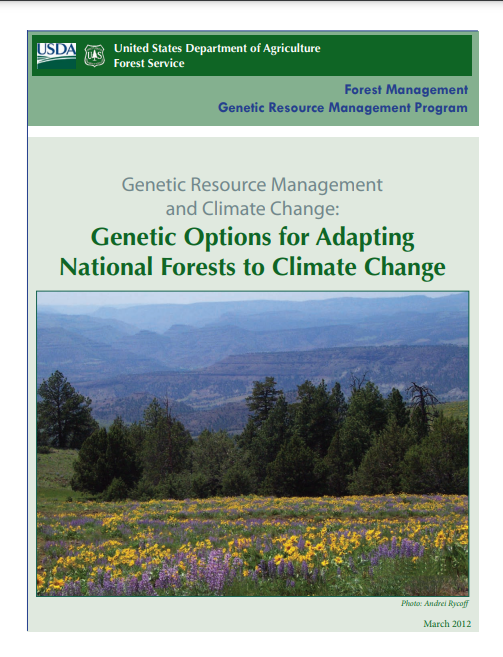Article /
Genetic Resource Management and Climate Change: Genetic Options for Adapting National Forests to Climate Change

Summary
This resource was submitted by the Climate Risk Institute for use by the CanAdapt Climate Change Adaptation Community of Practice.
This article is an abridged version of the original text, which can be downloaded from the right-hand column. Please access the original text for more detail, research purposes, full references, or to quote text.
Maintaining healthy ecosystems in the face of climate change will require new tools, practices, and refocused investments in all areas of Forest Service land management, including genetic resource management. This report provides an overview of current climate change knowledge and potential implications for forest tree species, as well as findings, goals, principles, and recommended “no regrets” strategies and actions derived from a national genetics workshop for National Forest System (NFS) and research geneticists held in 2010. The primary focus is on forest tree species.
Our understanding of the adaptive response of forest tree species to their local climates relates to key adaptive traits such as survival, growth, cold hardiness, drought tolerance, vegetative bud phenology, and disease resistance. Patterns of genetic variation vary greatly among tree species: some species are climatic “specialists” while others are “generalists.” Adaptive variation is most commonly associated with the seasonal temperature and moisture regimes of the source environment.
Such information has contributed to the development of seed zones and seed transfer guidelines to help ensure reforestation and restoration success through the use of locally adapted seed sources and planting stock.
However, if climate change proceeds as predicted, a major concern is that planting stock originating from fixed contemporary seed zones will be growing in suboptimal conditions by the end of the century or sooner.
Climate change will require trees to cope with new biotic and abiotic environments and stresses, including habitat shifting and alteration, fragmentation, drought, temperature extremes, flooding, wildfire, and novel insect and disease pressures. The specific effects of climate change will vary greatly over time and space. The box on the following page outlines the kinds of species and habitats most vulnerable to climate change.
Citation: Erickson, V., Aubry, C., Berrang, P., Blush, T., Bower, T., Crane, B., DeSpain, T., Gwaze, D., Hamlin, J., Horning, M., Johnson, R., Mahalovich, M., Maldonado, M., Sniezko, R., and St. Clair, B., (2012) Genetic Resource Management and Climate Change: Genetic Options for Adapting National Forests to Climate Change. Washington, DC: USDA Forest Service, Forest Management.
